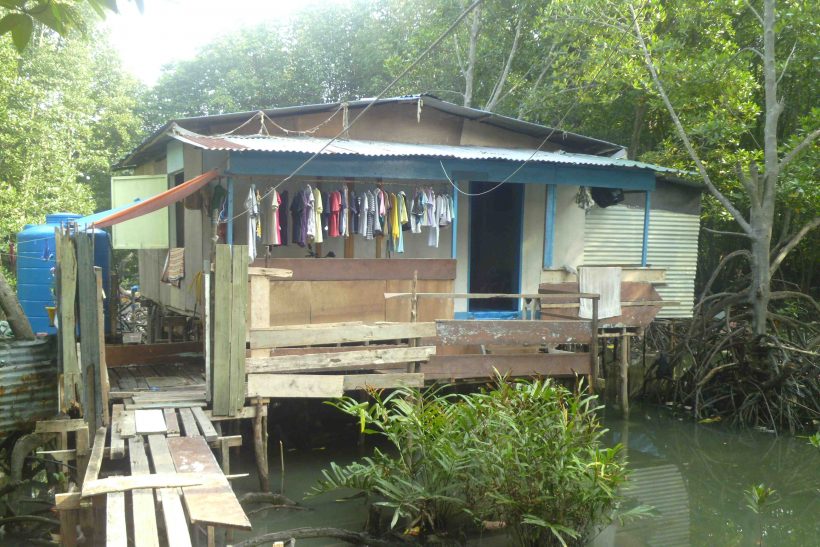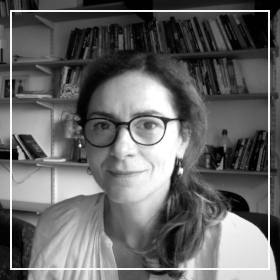Since 2012, I have been researching and writing about the difficult situation faced by the children of Filipino and Indonesian refugees and migrants living in the East Malaysian state of Sabah. Most of these children have been born in Sabah and yet are treated in the state as ‘foreigners’ who belong elsewhere. They are denied access to state education and healthcare, and spend much of their lives in squatter settlements or rudimentary housing attached to timber yards, chicken farms, quarries and other workplaces, out of sight of most Malaysian citizens.
For UNICEF, UNHCR and other organisations interested in these children, the most difficult (and most significant) aspect of their situation is that they are at risk of statelessness. Certainly, this was also a key motivation for my own ethnographic fieldwork, in Sabah’s capital city of Kota Kinabalu, from 2012-13. I wanted to see the difference that being stateless made to children’s everyday lives and experiences, to research their perspectives on (non)citizenship and (excluded) belonging, and to contribute new empirical data and theoretical insights to understandings of statelessness.
And yet, both on the ground in Sabah, and at my desk as I write up my material, I have found that child statelessness is a deeply paradoxical issue to explore.
From the perspective of the history of anthropology, contemporary experiences of statelessness as exclusion might appear confusing. After all, much of early political anthropology was devoted to showing how thoroughly unproblematic statelessness was. In African Political Systems, Fortes and Evans-Pritchard argued that ‘societies without a state’ were organised along the lines of kinship. Who needs citizenship when you are a member of a lineage, and when that membership neatly divides up your socio-spatial world? The idea that statelessness is a form of marginalization is paradoxical when viewed from this disciplinary history.
Contemporary statelessness researchers are more likely to be inspired by Hannah Arendt’s work, particularly her famous argument that the stateless lacked even the ‘right to have rights’ (Arendt 1968: 296). A key aspect of statelessness is that it exposes the paradox of how rights and freedoms do not, in practice, attach to individuals as general human subjects but, rather, as specific citizens. Similarly, the child rights enshrined in the United Nations Convention on the Rights of the Child (CRC) – to protection and participation, to education, health and respect – also turn out to be dependent on being recognised as a legitimate child-citizen. In 2002, despite being a signatory to the CRC, the Malaysian government reformed its Education Act, preventing the enrolment of ‘non-citizen’ children in its schools. Several young people I met in Sabah recalled for me the moment in 2002 when they were summoned to the headteacher of the Malaysian school they attended, and told they were no longer allowed to attend. Denying child rights to resident non-citizens is just one of the ways in which Malaysian nationalism designates its ‘others’, and reveals the practical emptiness of the notion of universal (non-state-dependent) child rights.
However, though the stories of educational exclusion that I heard in Sabah were painful for many who told them, a further paradox of child statelessness is that it is not best represented as a state of pure ‘abjection’.
The anthropology of children, and childhood studies more generally, has long explored the paradox between how children are represented – whether by their parents or other adults, whether in stories or for humanitarian campaigns – and the reality of their lives. In 1978, Myra Bluebond-Langner’s ground-breaking, child-focused ethnographic work showed how leukemic children on a US hospital ward were aware both of the reality of their own terminal illness, and of the necessity of not allowing their parents to know that they knew they were dying. That is, despite the reality of their knowledge, children felt compelled to maintain a pretence of ignorance in order to preserve a particular image of ‘innocent childhood’.
In my own work, I explore the paradoxical disconnect between dominant, problematic representations of stateless children in Sabah – as homeless and living on the streets, as criminally-minded, as culturally-uninterested in education – and the realities of children’s complex forms of belonging (see Allerton 2017). Most stateless children in Kota Kinabalu are not children forced to live on the streets after the deportation of their parents. In fact, children have wide networks of extended and adoptive family members, and in the cases where parents had been detained or arrested, there were always other adults ready to step in and care for children. Despite Sabah’s media representations, most stateless children live out-of-the-way with their families, trying to find whatever education they can in informal learning centres. Their situation is one of both vulnerability and resilience. In and around the city, I met numerous, multi-generational, undocumented families who, unrecognised by the Malaysian state, nevertheless contributed to the smooth running of the city. Stateless mothers washed dishes in the kitchens of schools from which their own children were excluded; Indonesian-origin teenagers with no formal schooling worked in timber yards; women facing eviction from squatter settlements cleaned local houses with, as one described it to me, ‘more toilets than people.’

This brings me to the final paradox of researching child statelessness in Sabah. Although international campaigns – such as UNHCR’s #IBelong campaign, launched in 2014 – approach statelessness as the primary issue that the stateless face, this is not necessarily the case. Children, in particular, may be unclear about the precise specificities of their documentation; what they care about is being documented, spoken of locally as ‘having a pass’. Children and grandchildren of Filipino refugees, who carry ‘IMM13’ identity cards, may be effectively stateless, but they ‘have a pass’ and are safe from being picked up in regular ‘checking’ operations. By contrast, a child with an Indonesian passport but no valid visa may not be stateless, but ‘does not have a pass’, and is therefore likely to be relatively immobile, scared of ‘checking’ by immigration officials.
The desire to ‘have a pass’ leads, in Sabah, to documentary pragmatism, a flexible attitude to the tactical acquisition or borrowing of identity documents.
However, such pragmatism may have unintended or potentially problematic future consequences for children. One boy, the son of a Catholic migrant from eastern Indonesia, had been left in a strange kind of legal orphanhood after his father took a new, Muslim name as part of his strategy to acquire Malaysian citizenship. This boy’s own birth certificate, stamped with ‘non-citizen’, continues to show his father’s old, Christian name, and makes it more difficult for the father’s citizenship to make a difference to the boy’s circumstances.
Anti-statelessness campaigns tend to see the acquisition of documents as the way to ‘solve’ statelessness. And yet, if we recognise that statelessness is not always the most pressing issue for poor families in some migrant contexts, we can better understand the decisions of some migrant families of Filipino origin who I encountered. These families are often holders of IMM13 cards, cards that were originally given to refugees and that entitle them to work, but not to access any state services. Nevertheless, such families may prefer to endure a limbo of ongoing noncitizenship and potential statelessness, renewing their IMM13 cards annually, rather than making any claims for Filipino citizenship. When a mobile unit of the Philippines National Statistics Office visited Kota Kinabalu, one girl, the granddaughter of Filipino refugees, told me that her family would most certainly not be applying for Philippines citizenship. For this girl and her family, what matters is not ‘solving’ their potential statelessness through acquiring any citizenship, but holding out for the specific recognition (as Malaysian residents or citizens) that they feel they deserve. Such stateless children have a clear idea of where they feel they belong. As one young boy said to me, quite fiercely, after I had clumsily asked him where he was from: ‘I am a person from here!’
References
Allerton, Catherine. 2017. Contested Statelessness in Sabah, Malaysia: Irregularity and the Politics of Recognition. Journal of Immigrant and Refugee Studies 15(3): 250-268.
Arendt, Hannah. 1968. The Origins of Totalitarianism. New York, NY: Harcourt Brace and World.
Bluebond-Langner, Myra. 1978. The Private Worlds of Dying Children. Princeton: Princeton University Press.
Fortes, Meyer and E.E. Evans-Pritchard. 1940. African Political Systems. Oxford: Oxford University Press.





